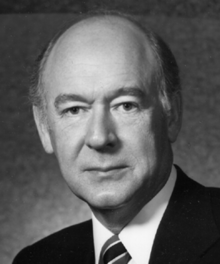Cecil Andrus | |
|---|---|
 | |
| 26th and 28th Governor of Idaho | |
| In office January 5, 1987 – January 2, 1995 | |
| Lieutenant | Butch Otter |
| Preceded by | John V. Evans |
| Succeeded by | Phil Batt |
| In office January 4, 1971 – January 23, 1977 | |
| Lieutenant | Jack M. Murphy John V. Evans |
| Preceded by | Don Samuelson |
| Succeeded by | John V. Evans |
| 42nd United States Secretary of the Interior | |
| In office January 23, 1977 – January 20, 1981 | |
| President | Jimmy Carter |
| Preceded by | Thomas S. Kleppe |
| Succeeded by | James G. Watt |
| Chair of the National Governors Association | |
| In office July 4, 1976 – January 23, 1977 | |
| Preceded by | Robert D. Ray |
| Succeeded by | Reubin Askew |
| Personal details | |
| Born | Cecil Dale Andrus August 25, 1931 Hood River, Oregon, U.S. |
| Died | August 24, 2017 (aged 85) Boise, Idaho, U.S. |
| Political party | Democratic |
| Spouse |
Carol May (m. 1949) |
| Children | 3 |
| Education | Oregon State University |
| Signature | |
| Website | Official website |
| Military service | |
| Allegiance | |
| Branch/service | |
| Years of service | 1951–1955 |
| Rank | Petty officer, second class |
| Unit | U.S. Naval Reserve |
| Battles/wars | Korean War Cold War |
Cecil Dale Andrus (August 25, 1931 – August 24, 2017) was an American politician who served as 26th and 28th governor of Idaho, for a total of fourteen years.[1][2][3] A Democrat, he also served as U.S. Secretary of the Interior from 1977 to 1981 during the Carter Administration. Andrus lost his first gubernatorial election in 1966 but won four (in 1970, 1974, 1986, and 1990) and his fourteen years as governor is the most in state history.
In public life, Andrus was noted for his strong conservationist and environmental views and accomplishments,[4] and an Idaho wildlife preserve established in 1993 in Washington County is named the Cecil D. Andrus Wildlife Management Area in his honor.[5][6] In 2018, the Cecil D. Andrus–White Clouds Wilderness was renamed after him.[7] A political liberal, he protected the environment by minimizing the control of business interests held over the public domain and by concentrating decision-making in the hands of experts in the Interior Department. He argued that environmentalism can and must coexist with positive economic development.[8]
- ^ Smith, Harrison (August 25, 2017). "Cecil Andrus, defender of Alaska's wilderness as Carter's interior secretary, dies at 85". Washington Post. Retrieved August 25, 2017.
- ^ Yardley, William (August 25, 2017). "Cecil D. Andrus, 85, Carter's preservationist Interior Secretary, dies". The New York Times. Retrieved August 25, 2017.
- ^ Kruesi, Kimberlee; Ridler, Keith (August 25, 2017). "Idaho's Cecil Andrus dies; as Interior secretary, he helped conserve Alaska land". The Seattle Times. Associated Press. Retrieved August 25, 2017.
- ^ Cite error: The named reference
andidggwas invoked but never defined (see the help page). - ^ "Cecil Andrus Wildlife Management Area". Idaho Department of Fish and Game. Archived from the original on October 1, 2009. Retrieved May 29, 2012.
- ^ White, Jim (April 2006). "Cecil D. Andrus Wildlife Management Area Long Range Management Plan" (PDF). Idaho Department of Fish and Game. Archived from the original (PDF) on May 2, 2012. Retrieved May 29, 2012.
- ^ "Andrus spent his life protecting this iconic Idaho wilderness; now it will carry his name". idahostatesman. Retrieved March 23, 2018.
- ^ Anne Becher and Joseph Richey, American Environmental Leaders: From Colonial Times to the Present (2 vol, 2nd ed. 2008) pp 27–29.